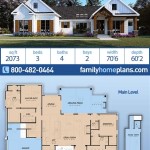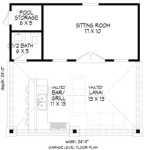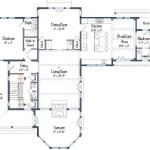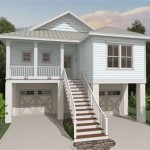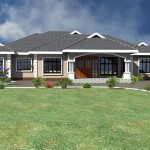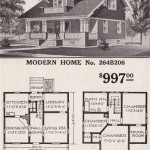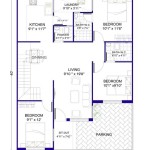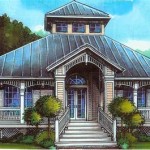Apartment Building Plans for 8 Units: A Comprehensive Guide
Developing apartment building plans for an 8-unit structure is a significant undertaking that requires careful consideration of various factors, including zoning regulations, property size, budget, and the target demographic. A well-designed 8-unit apartment building can be a lucrative investment; however, success hinges on the quality of the planning phase. This article will delve into the key aspects involved in creating effective apartment building plans for an 8-unit structure, covering architectural considerations, cost management, and legal compliance.
The initial stages of planning involve a thorough site assessment. This analysis will determine the feasibility of the project and identify potential challenges. Site characteristics such as soil composition, topography, and existing utilities are critical determinants of the design and the overall cost. Furthermore, the location's accessibility to public transportation, schools, shopping centers, and other amenities will directly impact the building's attractiveness to potential tenants.
Zoning regulations are crucial to understand before any design work commences. Local zoning ordinances dictate permitted building types, height restrictions, setback requirements, parking provisions, and density limitations. Compliance with these regulations is non-negotiable, and failure to adhere to them will result in delays, fines, or even project abandonment. It is advisable to consult with a land use attorney or zoning consultant to ensure that the proposed 8-unit building complies with all applicable regulations.
Architectural Design Considerations
The architectural design of an 8-unit apartment building should balance aesthetics, functionality, and cost-effectiveness. The design should seamlessly integrate with the surrounding environment while maximizing usable space. The building's exterior should be visually appealing, utilizing durable and low-maintenance materials. The interior layouts of the individual units should be thoughtfully designed to provide comfortable and functional living spaces.
The design process typically begins with conceptual sketches and preliminary floor plans. These initial designs are refined based on feedback from the client, the project team, and potential tenants. The floor plans should consider unit sizes, bedroom configurations, kitchen layouts, and bathroom placements. Adequate storage space is another important consideration, as is the provision of private outdoor spaces such as balconies or patios for select units.
Accessibility is a critical design element, particularly in light of the Americans with Disabilities Act (ADA). The building should be designed to be accessible to individuals with disabilities, including ramps, elevators (if multiple stories), and accessible unit layouts. Incorporating universal design principles throughout the building will make it more accessible and desirable to a wider range of tenants.
Energy efficiency is another vital consideration in modern apartment building design. Incorporating energy-efficient windows, insulation, HVAC systems, and lighting fixtures can significantly reduce operating costs and improve the building's sustainability. Solar panels, rainwater harvesting systems, and other green building technologies can further enhance the building's environmental performance.
The selection of building materials is a key factor in both the aesthetic appeal and the long-term durability of the apartment building. Durable and low-maintenance materials such as brick, concrete, and fiber cement siding are often preferred for exterior cladding. Interior finishes should be selected for their durability, ease of maintenance, and aesthetic appeal.
Cost Management and Budgeting
Developing a realistic budget is essential for any construction project. The budget should account for all costs associated with the project, including land acquisition, architectural and engineering fees, construction costs, permits, insurance, and financing costs. It is advisable to obtain multiple bids from qualified contractors to ensure competitive pricing.
Controlling costs throughout the construction process is crucial for staying within budget. Value engineering, which involves identifying and eliminating unnecessary costs without compromising quality or functionality, can be a valuable tool. Regular monitoring of expenses and proactive management of change orders can help prevent cost overruns.
Financing is a key element in the feasibility of an 8-unit apartment building project. Options include traditional bank loans, construction loans, and private equity financing. The best financing option will depend on the specific circumstances of the project, including the developer's financial standing and the project's risk profile. Securing favorable financing terms is crucial for maximizing the profitability of the project.
Contingency funds should always be included in the budget to cover unexpected expenses or delays. A contingency of 5-10% of the total construction cost is generally recommended. This buffer will help protect the project from unforeseen challenges and prevent cost overruns.
Life cycle costing should also be considered. This involves evaluating the total cost of ownership over the building's lifespan, including maintenance, repairs, and replacements. Selecting durable materials and energy-efficient systems can reduce life cycle costs and improve the building's long-term profitability.
Legal and Regulatory Compliance
Beyond zoning regulations, numerous other legal and regulatory requirements must be met when constructing an 8-unit apartment building. Building codes, fire codes, and environmental regulations all play a role in ensuring the safety and well-being of occupants and the surrounding community.
Obtaining the necessary permits and approvals is a critical step in the construction process. This often involves submitting detailed plans to local authorities and undergoing inspections to ensure compliance with applicable codes and regulations. Failure to obtain the required permits can result in delays, fines, or even the shutdown of the project.
Environmental regulations may require an environmental impact assessment to be conducted, particularly if the project involves disturbing sensitive ecosystems or potentially impacting water quality. Compliance with stormwater management regulations is also essential to prevent erosion and pollution.
Contracts with architects, engineers, and contractors should be carefully reviewed by legal counsel to ensure that they are fair and protect the developer's interests. The contracts should clearly define the scope of work, payment terms, and dispute resolution mechanisms.
Insurance coverage is essential to protect the project from various risks, including property damage, liability claims, and construction delays. Adequate insurance coverage should be in place before construction begins and maintained throughout the duration of the project. It's important to work with an agent experienced in construction insurance to ensure all applicable risks are addressed.
The design of common areas such as hallways, stairwells, and laundry rooms requires careful consideration to ensure accessibility, safety, and functionality. These areas should be well-lit, adequately ventilated, and designed to minimize noise transmission. Safety features such as fire alarms, sprinkler systems, and emergency exits are essential in common areas.
Proper landscaping can enhance the aesthetic appeal of the apartment building and create a more pleasant living environment for tenants. Landscaping should be designed to be low-maintenance and drought-tolerant. Outdoor amenities such as picnic areas, playgrounds, and walking trails can further enhance the building's appeal.
Security measures are increasingly important in apartment buildings. Security cameras, controlled access systems, and adequate lighting can help deter crime and improve tenant safety. A well-designed security system can be a valuable selling point for attracting and retaining tenants.
Garbage disposal and recycling facilities should be conveniently located and adequately sized to accommodate the needs of the tenants. These facilities should be designed to minimize odors and prevent pest infestations. Compliance with local recycling regulations is essential.

8 Unit Apartment House Plan With 1512 Sq Ft 3 Bedroom Units 83139dc Architectural Designs Plans

8 Unit Apartment Plan J778

8 Unit Apartment Complex With Balconies 21425dr Architectural Designs House Plans

8 Unit Building 2 Bedrm 953 Sq Ft Per Plan 126 1325

8 Unit Multi Plex Plans

Robusta Builder Preferred Modern Style Apartment House Plan 7855

8 Unit Apartment Building 1202 Sq Ft 2 Bed Units 83118dc Architectural Designs House Plans

8 Unit Multi Plex Plans

8 Unit Apartment Plan J778

Multi Family Home And Building Plans

